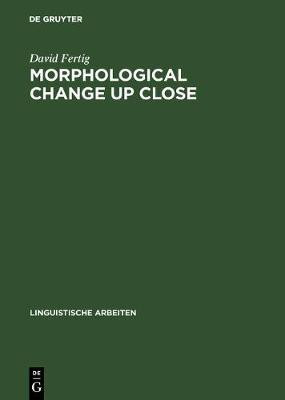Morphological Change Up Close(English, Electronic book text, Fertig David)
Quick Overview
Product Price Comparison
Using a data base of more than 86,000 verb tokens from texts written by Nurembergers between 1356 and 1619, this book explores some of the many changes in verbal inflection that took place during this period and their implications for a number of important questions in morphological and diachronic theory. The changes discussed include the leveling of stem-vowel and consonant alternations and regularizations and irregularizations. The theoretical issues addressed include the directionality of analogical leveling, the adequacy of connectionist and related models of morphological processing, and the relationship between sociolinguistic variation and diachronic change.


